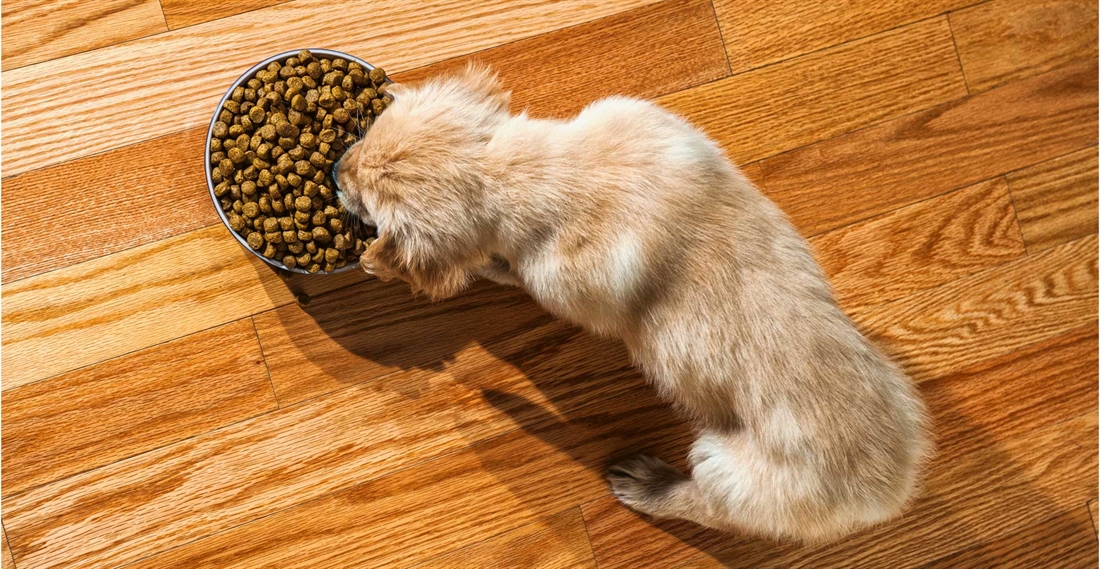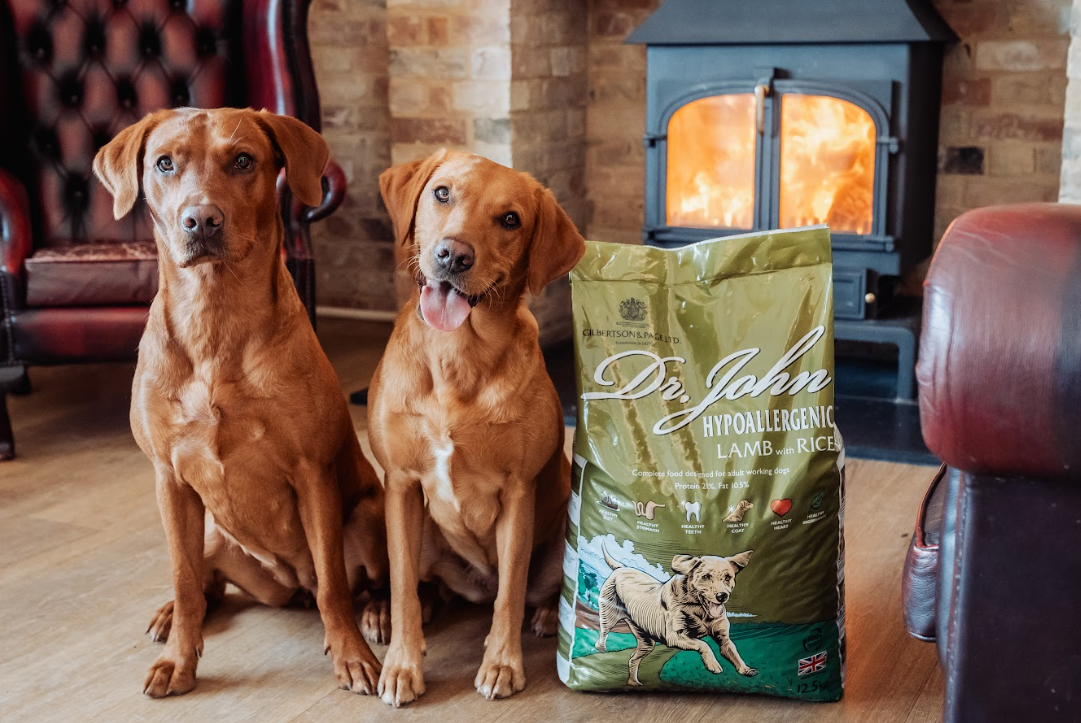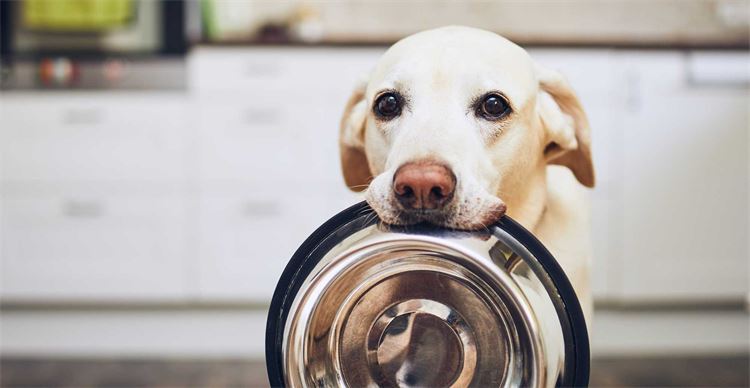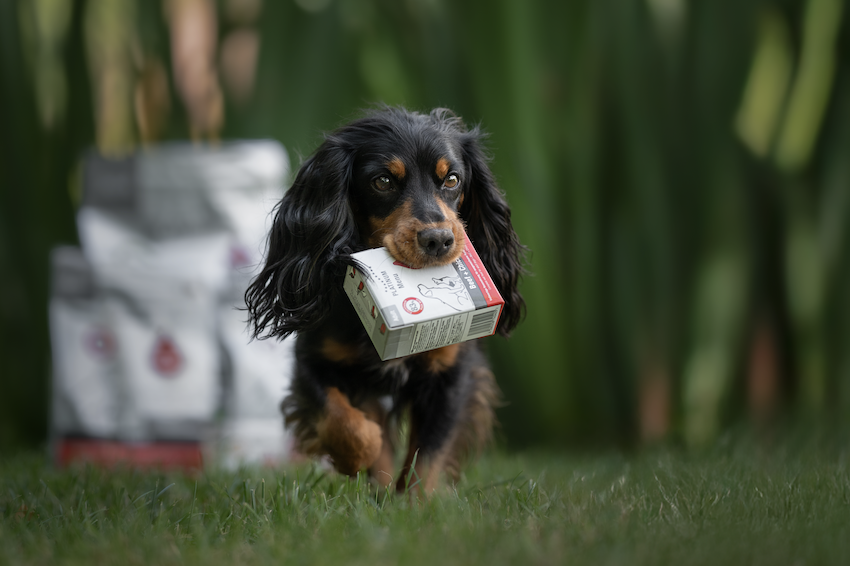4 Classic Feeding Mistakes Dog Owners Make
Too fat? Too thin? It’s normal to worry about your dog’s body condition. Our experts identify four common errors and how to avoid them in this feeding guide.

1. Overfeeding
If the dog doesn’t clear up its food in 15 minutes, that is a clear sign you are overfeeding them,” explains Howard Kirby, owner of Hampshire’s Mullenscote Gundogs Training Centre. “I meet a lot of people who say their dogs are fussy eaters, but I have never had a dog who wouldn’t eat. I rely on appetite as a way to manage health. I know that if I go into the kennel in the morning and one of my dogs doesn’t eat its food, something is seriously wrong.”
For those feeding kibble, the most important place to look for information on how much you should be feeding your dog is, unsurprisingly, the back of the packet. While we can’t all weigh out individual meal portions gram for gram every day, it is worth double checking portion sizes and measures every now and again. It is amazing how quickly the excess can add up if you are filling a cup or scoop inconsistently.
“After that, it is a bit suck it and see,” said Howard. “For instance, we have three springer spaniel bitches, all equal in size and stature, but we have to alter their feed and treat them very differently. One will put on weight, even if you only fed her fresh air, and another you simply cannot feed enough because she is so busy. We are assessing the condition of our dogs on a daily basis.
2. Not Being Honest About Your Gundog’s Workload
It doesn’t matter if your dog has a lot of red in its pedigree, if you have ambitions of entering every working test in the country, or if you plan to work every day throughout the shooting season – if your dog is currently spending the majority of its time flat out in front of the Aga, it doesn’t need to be fed on ‘go-faster’ working dog food.
“A lot of people feed their dog based on the level of work they aspire to do,” said Mike Ede, who started his own dog feed brand, WorkingHPRs, nine years ago. “I was guilty of this when I first started training. My weimaraners are mainly my hobby – we are sometimes on 250-bird duck days where the dogs are required to do a lot of work in a very short space of time, but there are also times when we will be on small, 60-bird days with a handful of other people and so the dogs might only pick 10 birds each. I definitely used to feed them as if they were working intensely all the time and then wondered why they had so much energy all the time.”
For the average gundog owner – who enters the occasional test and goes beating or picking up once or twice a week during the season – it is far more realistic to opt for a ‘lighter’ workload blend of feed.
This can be fed all year round and during the season, it is then a simple case of monitoring your dog’s condition and increasing portion sizes to maintain their usual appearance, health and energy levels.
3. Ignoring The Dog Nutritionists
With the average gundog owner having little appreciation of what ingredients are used in their dog’s feed, Julie Palmer of Seadogs Training in Suffolk often sees clients making the mistake of feeding both kibble and meat together.
“My pet hate is seeing clients mix complete diets. You have to understand that dry food blends have been carefully researched and when you add an extra bit of fish, or chicken, you will upset the nutritional balance and this can cause a range of health issues, from urine infections to gut problems,” she said.
Working dog food manufacturers have invested large sums of time and money in R&D to better understand dogs’ nutritional requirements. This is particularly important when it comes to puppies, where not following guidelines can be detrimental to your dog’s development and long-term health.
“When it comes to moving off puppy food, I see a lot of tail wagging the dog going on,” said Howard Kirby. “Puppy food is more expensive, and it does require those in multi-dog households to have two different foods on the go. Sadly, convenience and cost encourage people to move away from puppy food sooner than they should.”
As novices start to get more involved in the sport, and for those who are working their dogs hard and often, feed and dog nutrition need to be assessed pre-season. Howard admits that he has found tapping into the knowledge from manufacturers’ in-house nutritionists to be vital when preparing for competitions.
“When we were getting dogs ready for the world championships, we used the nutritional help line from Chudleys. Having access to that provided us with a lot of information about condition feeding, and other trainers shouldn’t be shy to ask these dog nutritionists more questions, because that’s what they’re there to do,” he said.
4. Changing Dog Food For The Sake Of It
Unless you are guilty of point number two, or think that your dog has intolerances, owners would be ill-advised to change their dog’s feed. If you think food will change your dog’s behaviour, you probably need to reassess your approach to training.
If you are unable to manage your dog’s weight with food, you should consult your vet. If you have a fussy eater, consider whether you are feeding your dog too much, or if your dog has successfully trained you into adding a few additional tasty chunks of chicken to it’s dinner.
“If your dog is happy and keen to eat, if it’s stools are of a good size and consistency, if they look to be of the right size and body condition, and are overall looking and acting ‘healthy’, I am a strong advocate of not changing their feed,” said Mike Ede. “If your dog’s coat is dull and lifeless, it would be beneficial to add fish oil to its diet. If your dog is reluctant to eat something, it might be because it doesn’t make them feel that great. Dogs are not wolves; they don’t need to be fed an ancestral diet and they can process starch, but some do have underlying health issues.”
While it will be very obvious if your dog is allergic to something, it can be slightly more tricky to identify intolerances. If you notice that your dog has itchy or unclean ears, or if they frequently nibble between their feet, this might be a sign that the dog’s diet does not quite suit them. This can usually be overcome by moving to a grain-free feed or changing to a new protein source.
There are plenty of brands, ranges and flavours of dog food to choose from and anyone who wants to explore further should check out the website www.allaboutdogfood.co.uk. This searchable, independent dog food directory has a comprehensive comparison tool for those who want to assess different feeds.
Managing Your Dog’s Diet
While these are some of the most common mistakes dog owners can make, there are other issues to watch out for, too. Every dog is different – even two pups from the same litter grow differently and need different amounts of food and diets. There is a wealth of nutritional guidance available on manufacturers’ websites, which is well worth reading.
Related Articles
Get the latest news delivered direct to your door
Subscribe to Gundog Journal
Unlock the full potential of your working dog with a subscription to Gundog Journal, the UK’s only dedicated magazine for gundog enthusiasts. Published bi-monthly, this authoritative resource delivers expert training advice, in-depth interviews with top trainers and veterinary guidance to help you nurture a stronger bond with your dog.
With stunning photography and thought-provoking content, Gundog Journal is your essential guide to understanding, training and celebrating your working dog.
Save 10% on shop price when you subscribe, with a choice of packages that work for you. Choose from Print & Digital or Digital only with each journal delivered directly to your door or via the app every other month, plus access to past issues with the digital back issue library.








